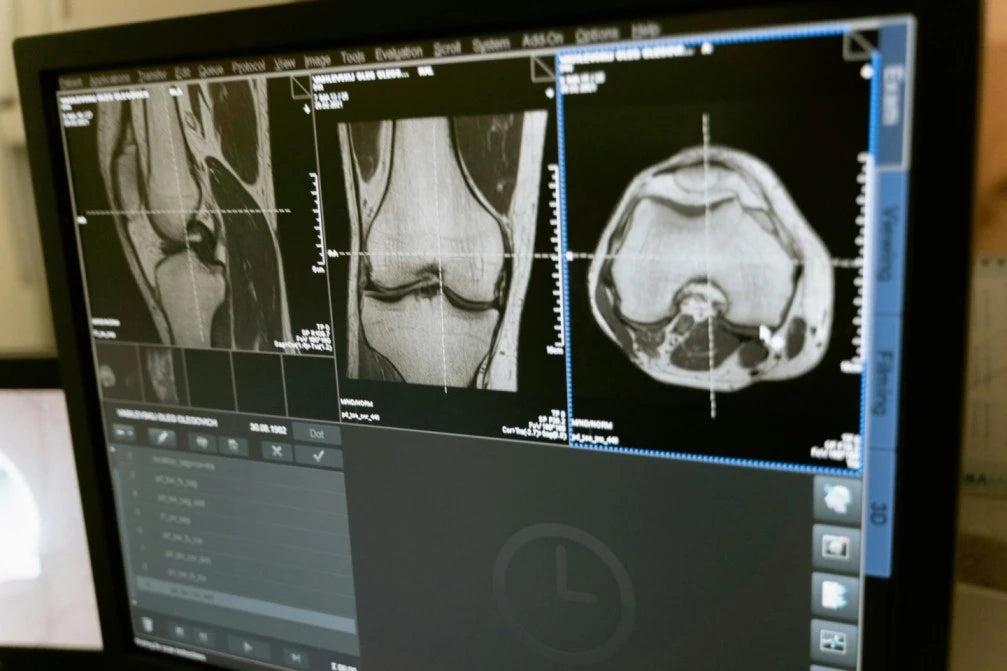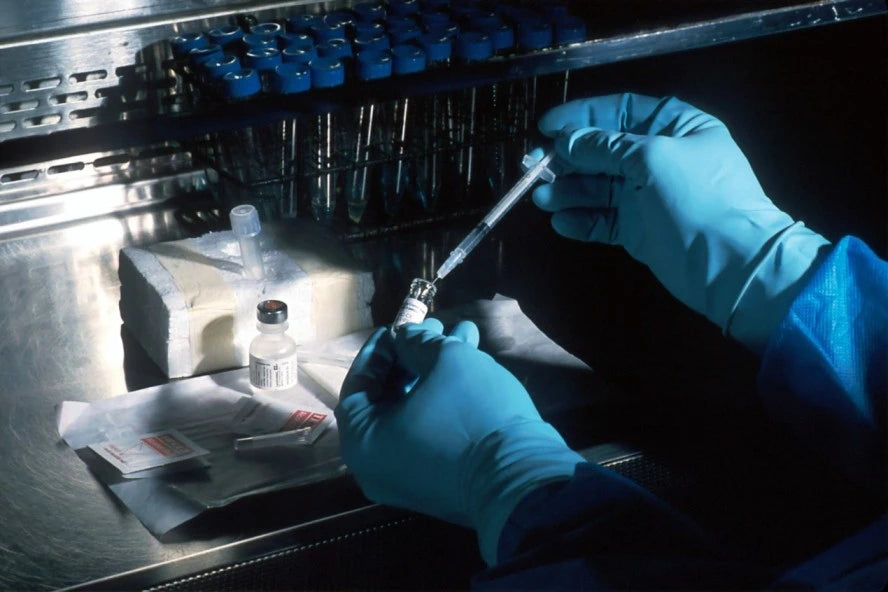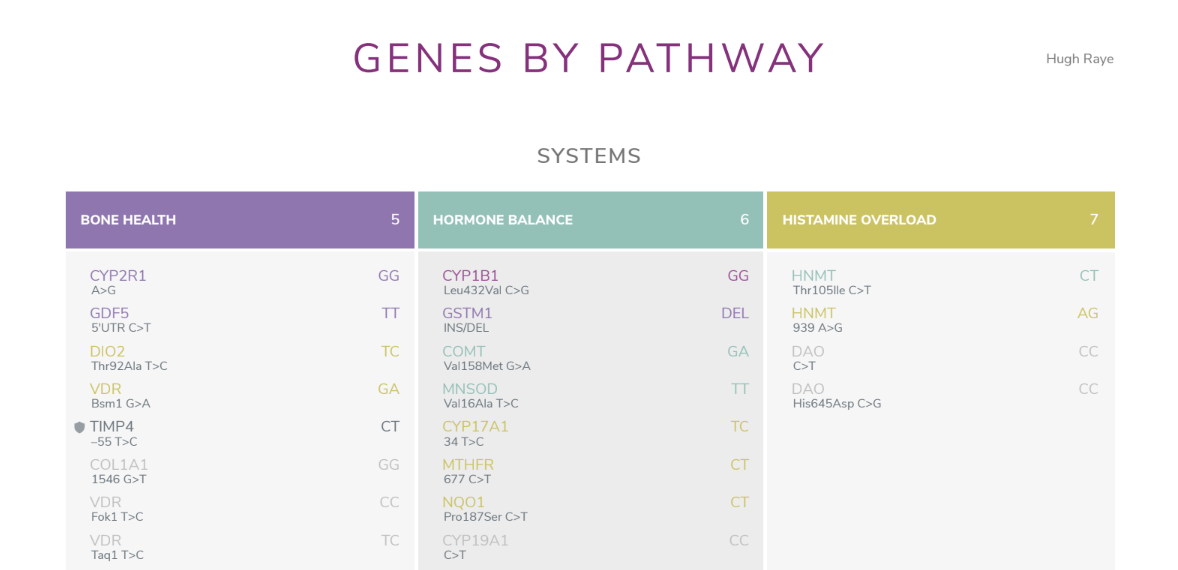The Origins of Bone Loss: Is Osteoporosis Genetic?
Osteoporosis wants you to avoid stairs? Hold onto the handrail and reclaim your independence.
Imagine an invisible force silently and gradually eroding the foundation of your physical strength. This is not the plot of a science fiction movie but a reality for over 200 million people worldwide who live with osteoporosis. This condition often termed the 'silent thief', doesn't just steal away bone density; it robs individuals of their mobility and independence, making them vulnerable to fractures from the slightest falls.
In this blog, we'll dive into the genetic factors that influence your risk of developing osteoporosis. We'll debunk common myths, like the notion that heredity seals your fate when it comes to bone health. You'll discover that while family history plays a role, there are still proactive steps you can take to strengthen your bones and reduce fracture risks.
So, let’s get started with the foundations!
Globally, statistics suggest that 1 in 3 women and 1 in 5 men aged 50 and above are likely to suffer from fractures due to osteoporosis during their lifetime. It involves the gradual loss of bone tissue, making bones brittle and prone to fractures. While the early stages may not have clear symptoms, advanced osteoporosis can cause severe back pain, loss of height, stooped posture, and fractures from minor impacts or falls. If left unchecked, it can lead to long-term disability.

The good news is that with early detection and proper treatment, the progression of bone loss can be slowed down significantly. Many people are able to manage their osteoporosis through medications, weight-bearing exercises, a nutrition-rich diet, and lifestyle changes to prevent serious bone fractures.
But, let’s try to identify the root cause that impacts your bone health and learn if genes can increase osteoporosis risk.
Bones and Family: How Genetics Influences Your Risk of Osteoporosis

It's easy to assume that poor lifestyle choices are solely to blame for conditions like osteoporosis. However, science shows genetics plays a complex contributory role. Specific genes affecting bone cell development, vitamin D synthesis, bone mineral density, and other elements may raise or reduce your risk. While lifestyle factors are still important, understanding your genetic predisposition is key for preventative action.
Debunking Myths and Unveiling the Truth About Hereditary Osteoporosis
There's a common myth that having one family member with osteoporosis means you'll definitely develop it too. In truth, around 60-80% of variance in bone mineral density can be attributed to genetics. So while hereditary risks exist, your lifestyle choices still play a key role. Knowledge of genetic factors empowers you to make dietary, fitness and wellness choices that promote bone health regardless of hereditary odds.
|
Don't wait for symptoms, take action. Understand your bone health with 3X4 Genetics. |
Harnessing the Power of Genetics for Personalized Osteoporosis Management

Traditional osteoporosis diagnosis relies solely on bone mineral density (BMD) testing, offering a limited picture. A genetics test goes beyond the snapshot, analyzing specific DNA markers associated with your inherited risk of developing osteoporosis. This empowers you and your healthcare professional to create a custom prevention plan, giving you the best chance at healthy, fracture-free aging.
Beyond the Numbers: The Role of Genetic Counselors
Following your Genetics test, a board-certified genetic counselor will guide you through your results. They'll:
- Explain the meaning of your specific gene variants linked to osteoporosis risk, such as COL1A1 or LRP5.
- Discuss how these variants influence your risk and how they might differ from family members even when sharing similar BMD scores.
- Tailor recommendations based on your genetic makeup, including:
- Earlier or more frequent bone density scans based on risk level.
- Targeted medications to improve bone density and reduce fracture risk, like bisphosphonates or denosumab.
- Personalized exercise regimens focused on weight-bearing activities and balance training.
- Dietary recommendations tailored to your genetic profile, including calcium, vitamin D and other supplements.
Sample Report Insights:
Here's a glimpse of how your Genetics report might translate into real-world action:
- Variant identified: rs1800223 in the COL1A1 gene.
- Impact: Increases your risk of developing low bone mineral density by 20%.
- Recommended modifications:
- Early BMD scan at 45 years old (compared to the standard 65).
- Consider starting a bisphosphonate medication to increase bone mineral density.
- Increase weight-bearing exercises like walking, jogging, or dancing to at least 30 minutes most days of the week.
- Include calcium-rich foods like dairy products and leafy greens in your daily diet.
- Supplement with vitamin D3 and K2 to ensure adequate levels.
- Ensure adequate intake of quality protein to support bone tissue.



By understanding your unique genetic makeup, you and your doctor can work together to proactively manage your bone health.
Now that we've explored the genetic factors behind osteoporosis, let's look at how to leverage DNA insights to actively strengthen your bone health.
Blueprints for Stronger Bones: A DNA-Driven Approach to Osteoporosis
The key is to start early as age plays a pivotal role in the development of osteoporosis. By understanding your genetic makeup from testing, you can work with your doctor to craft personalized strategies to bolster bone health long before the tell-tale signs of osteoporosis appear.
This DNA-driven approach gives you a blueprint for building and maintaining stronger, resilient bones throughout your life. Rather than waiting for an osteoporosis diagnosis down the road, you can use genetic insights to get ahead of bone issues today and take preventative steps.
Understand the Types of Genetic Tests for Osteoporosis
While the specifics of different genetic tests may vary, they all aim to unlock insights into your unique predisposition towards bone health and fracture risk. These insights are presented as a genetic risk blueprint, offering valuable information to guide your personalized healthcare journey. This blueprint uses your unique genetic makeup to provide information on: :
- Bone mineral density (BMD) – that can identify osteoporosis or osteopenia
- Gene variants affecting vitamin D synthesis and metabolism as well as bone remodeling
- Broader inherited risks from 200+ bone health gene variants
Navigating Through Anxieties and Uncertainties Around Testing
It's understandable to feel anxious or uncertain about genetic testing for osteoporosis risk. Confronting potential health issues can be scary. You may worry about getting back results showing increased risk or what a diagnosis could mean for your future bone health.
It's important to be gentle with yourself and acknowledge those feelings. Genetic testing is ultimately about empowering you with knowledge so you can take proactive steps for your bone health. Even with genes that may increase your risk, there are many effective prevention options today, especially with early intervention.
Focus on each small action - ordering the test, opening results, meeting with your doctor or nutritionist to discuss next steps. Taking it step by step allows you to better cope with uncertainty as it arises.
Don't be hesitant to speak openly to your care team about concerns.
Building Bone Resilience - Embracing the Osteoporosis Journey
Receiving an osteoporosis diagnosis can feel emotionally heavy, provoking fears about loss of strength, independence, or suffering pain. However, it's crucial to reframe this experience as an empowering opportunity. It allows you to strengthen not only your bones, but also your inner resilience.
A. Prevention Strategies
|
B. Management Strategies
|
| Your Bones, But Better.
Imagine an app update, but it's for your bones. Get the latest version with a 3x4 Genetic Test. New features include stronger bones and less fragility. |
Final Thoughts
While genetics can influence osteoporosis risk, they do not seal your fate. Even with a genetic predisposition, proactive lifestyle measures and close monitoring can significantly reduce your chances of bone fractures. Knowledge of your genetic risk factors from testing simply allows more targeted, personalized prevention strategies in collaboration with your doctor.
Empower yourself with information - order our comprehensive 3X4 Genetics test to uncover inherited indicators affecting your bone health. Our world-class laboratories provide insights into key gene variants associated with optimal bone density, fracture risk, vitamin D metabolism , and more.
Equipped with this valuable blueprint of your genetic risk, you can work with specialists to craft lifestyle, nutrition, and wellness approaches that actively strengthen bones and resilience. Monitor progress with regular BMD scans. While osteoporosis presents challenges, personalized solutions centered around genetic knowledge provide real hope for healthy, active aging with strong bones.
FAQs
Can genetic testing tell me for sure if I will develop osteoporosis?
No test can conclusively predict if you will develop osteoporosis. However, genetic testing provides risk assessment by detecting gene variants associated with rapid bone loss. This allows early preventative strategies well before onset.
If I have a genetic predisposition, can I still prevent osteoporosis?
Absolutely. Your lifestyle choices play a significant role. With genetic knowledge, you can tailor diet, exercise, and bone-building supplements to counter inherited risk. Monitoring and medication when necessary also reduce the likelihood of fractures.
What do genetic test results actually tell me about my bone health?
The results identify gene variants linked to low bone density, vitamin D deficiency, poor bone quality, and higher fracture risks and other factors that impact bone health such as inflammation and thyroid balance. This helps estimate your odds of osteoporosis so you can customize prevention/management protocols.
How should I interpret my genetic test results and use them to inform my health decisions?
Don't view results as a diagnosis but rather as risk factors to address. Work with doctors to translate genetic data into actionable lifestyle, wellness, and screening steps for improved bone health.
Are there new treatments or research developments for osteoporosis?
Yes, medications target specific bone loss mechanisms. Nutrient supplementation also shows promise. Gene therapies to silence/block harmful variants and customized drug protocols tailored to genetics are emerging areas.


